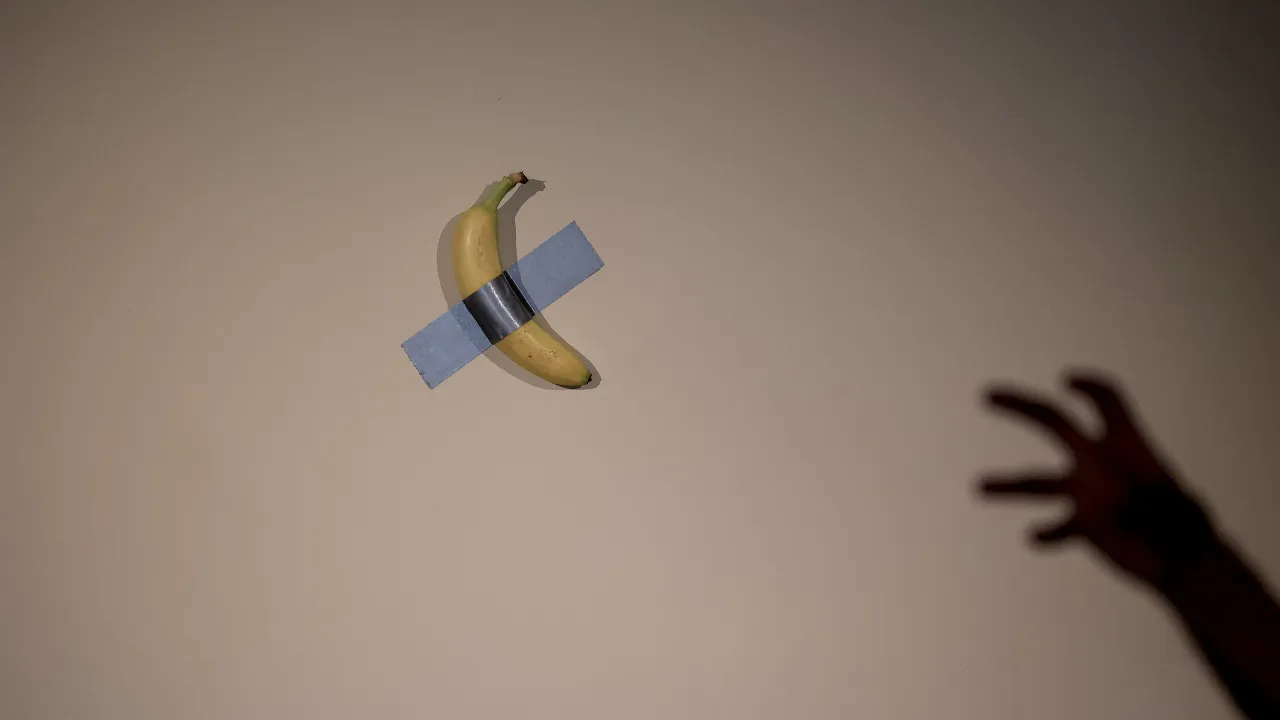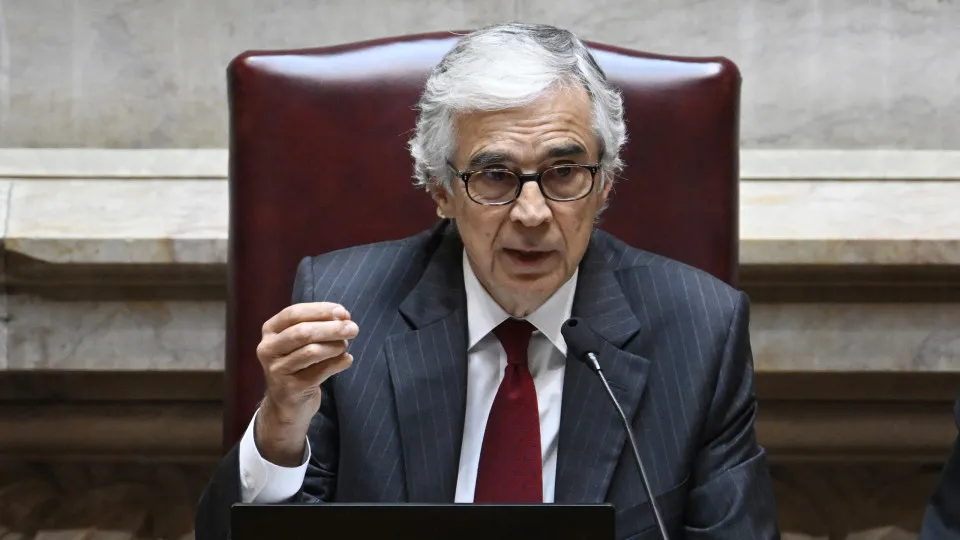
The exhibition, which is free to the public and open until January next year, brings together several of Cattelan’s iconic creations. Known for his provocative art, Cattelan famously showcased a banana taped to a wall in 2019. This collection, presented in Portugal for the first time, is specifically designed for the Casa and Parque de Serralves.
“We chose a strict selection of works that, to me, are the core of his work. This was the goal. He is a court jester, not a clown, and is the only one with the power to speak truth to power. This is a very important aspect of what he does and the art world in general,” said Philippe Vergne, director of the museum and curator of the exhibition.
Vergne described Cattelan as a character of himself, inspired by theater and the Italian tradition of ‘commedia dell’arte.’ Despite his absence during the visit, the curator guided journalists through 26 artworks focusing on themes such as History, fascism, religion, iconography obsession, theater, death, and self-portrait.
A bunch of bananas on a work table, during the final adjustments by the Exhibitions Service before a media tour began, drew attention. Philippe Vergne led the tour, surrounded by covers, cleaning products, triple plugs, a water jug, and duct tape.
The curator discussed Cattelan’s focus on fascism, starting with “Novecento” (1997), a horse suspended in the air defeated by the weight of History, drawing inevitable parallels to Bertolucci’s film of the same name. The curator then deliberated on the route through the exhibition, ultimately deciding on a room housing “Untitled” (1997), an ostrich with its head buried in the ground, offering a straightforward commentary on today’s world.
Religious fascination permeates many pieces, from a reduced version of the Sistine Chapel in 2018, designed to recalibrate the relationship between humans and the divine, to the renowned “La Nona Ora” (1999), featuring Pope John Paul II struck by a meteorite, one of the artist’s most famous works.
“Jorge,” a homeless figure at the entrance to the chapel, where another work engages with religious themes, is visible to passersby, echoing a scene familiar in Porto and other European cities.
Inside, a boy with the face of Nazi dictator Adolf Hitler appears in “Him” (2001), kneeling before a pigeon-filled altar, one of several “ghosts” placed throughout the complete installation. This is an invitation to a “negative epiphany” about the dangers of reverting to darker times today.
There is also an elephant in the room, “Not Afraid of Love” (2000), draped in a white cloth reminiscent of the Ku Klux Klan, and a mechanical drum boy dominates with its gradually emitted sound.
“I know you want me to talk about a banana, but there are no bananas in this exhibition,” Vergne quipped as he led the way to the dimly lit room showcasing the Italian artist’s most iconic work.
Because “he is a comedian,” like the title of the piece, and not a banana, just as a pipe is not a pipe in René Magritte’s famous painting, this room is dedicated to the ‘meme’ and the power of a 2019 creation that “is still talked about today.”
In November 2024, a version of “Comedian,” featuring a banana purchased from a nearby supermarket, was sold at auction in New York for $6.2 million (5.9 million euros) to a cryptocurrency entrepreneur.
Since its debut in 2019 at an art fair and sale for approximately $120,000, “Comedian” has become a global phenomenon with significant impact “on contemporary cultural consciousness,” mentioned Sotheby’s in a release at the time.
The artist did not receive proceeds from the auction, as a collector, not Cattelan himself, put it on sale after purchasing the ‘original’ banana for 35 cents from Shah Alam, a vendor near Sotheby’s in New York.
“Nobody talks about the duct tape,” Vergne joked, often employing irony to deflect discussions from the exhibition’s most famous work, despite journalists’ persistence.
“Sunday,” from last year, occupies a wall with bullet-riddled gold-plated steel panels and nine white-covered corpses, one of the artist’s latest works — “an ornament of despair, an ornament of violence,” in dialogue with Italian Arte Povera of the 1960s and 1970s, facing nine corpses covered in white sheets, “All” (2007), reflecting on September 11, 2001.
“Daddy daddy” (2008), Pinocchio ‘drowned’ upside down in Serralves lake, confirms for the director that “if you lie, you die, that’s how the game is played today.” It encapsulates the exhibition’s ‘meta’ vision—Cattelan’s creation of a character, like Geppetto crafting the wooden boy, mirrors the strong themes of lies, suicide, politics, character, and theater marking the rest of the exhibition.
In addition to the exhibition, open until January, Serralves is launching a publication dedicated to it, featuring a visual essay by the Italian artist and texts by Philippe Vergne, Bernard Blistène, and Cecília Alemani.
The exhibition’s curation—featuring a giant middle finger in the park, initially aimed at Milan’s Stock Exchange—is by Vergne, coordinated by Giovana Gabriel with support from Perrotin Gallery and Gagosian Gallery.
Born in Padua in 1960, Maurizio Cattelan, a self-taught artist, is renowned for his provocative and satirical approach to art creation, distinguished by hyper-realistic sculptures and installations that earned him notoriety as a ‘joker,’ gaining recognition since the late 20th century, including a retrospective at New York’s Guggenheim in 2011 and the viral “Comedian” case in 2019.
“I remember walking in New York, I asked Cattelan what he was reading, and he told me: ‘A biography of Napoleon.’ I began to understand how he relates to History. I know how he is perceived and who he is in the art world. There is a perception he created, which serves almost as a refuge, and [the] perception of people viewing his work,” Philippe Vergne states.




